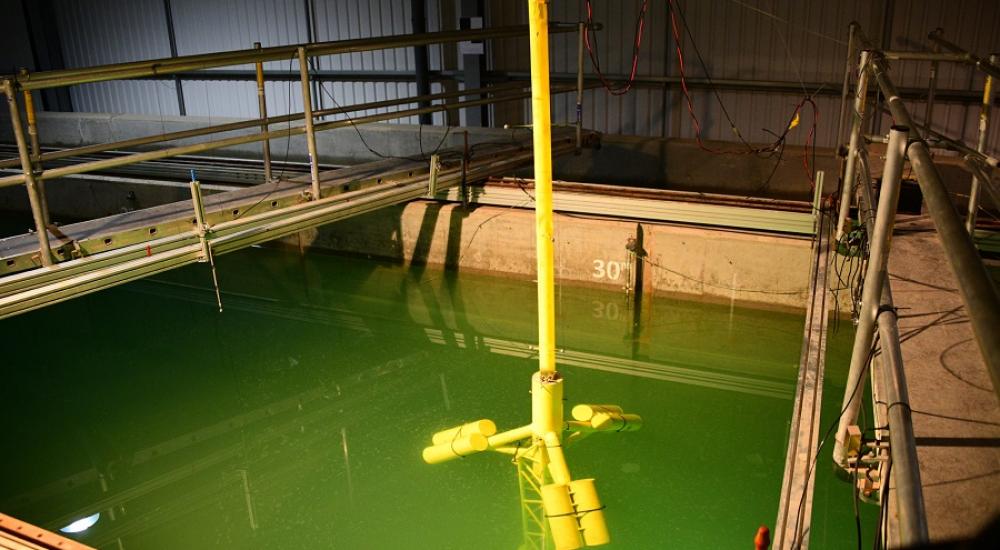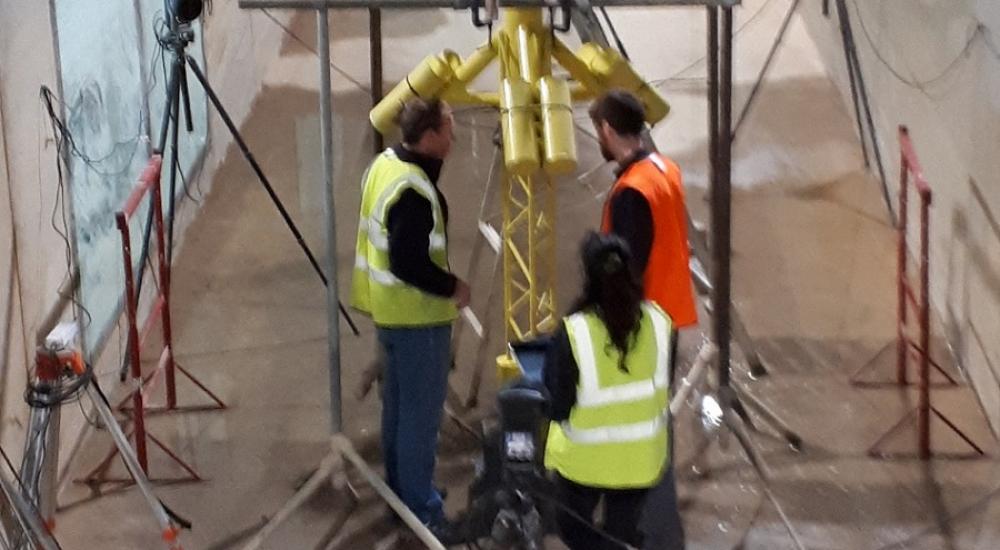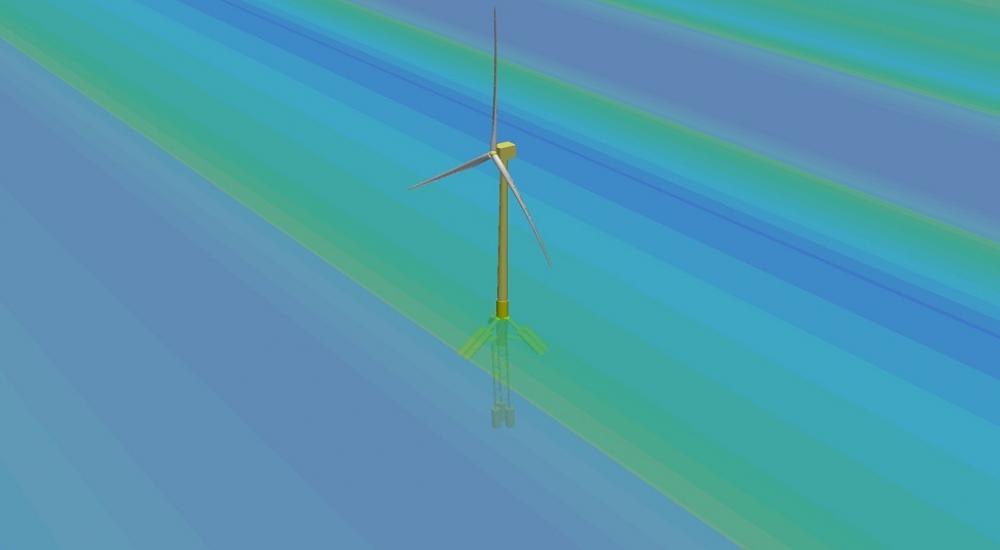Modelling tackles deep-sea floating wind challenges
Our analysis of a cutting-edge floating wind foundation design – the Stinger Keel – is helping address the challenges of making huge turbines safe and affordable to build and install in the harsh conditions of deep seas.
Engineers have been using physical and computational models to examine the Stinger Keel’s hydrodynamic performance as part of a one-year project funded by Innovate UK to help expand energy output via floating turbines located in deeper seas.
The modelling feeds into work by a consortium to optimise Floating Energy Systems’ (FES) foundation concept to reduce risks and make it cost-effective to construct, install, and use. HR Wallingford’s hydraulic specialists have therefore been running tests to allow them to understand the impact of large waves and strong currents on the enormous structures.
“Floating offshore wind has enormous potential globally,” explains Mike Case, our lead for clean energy. “Suitable fixed bottom sites will become congested in some countries, while others don’t have the luxury of a shallow continental shelf, so using deep-water sites with floaters is the answer. However, whilst deep water offers stronger winds with improved capacity factors, it also means that the massive floating foundations – akin to oil and gas platforms – have to cope with more extreme wave and hydrodynamic forces. Properly understanding and quantifying these forces is key to a successful engineering design.”
To run the physical modelling tests, our engineers built a model (1:67 scale) of the Stinger Keel structure. This featured FES design’s distinctive keel – long for stability in high seas but with a hinged connection so that it fits in the shallower depths of a port from where it can be floated out to its installation site.
The Stinger Keel in our Fast Flow Facility

Waves were generated in the Fast Flow Facility to analyse the Stinger Keel model

The model was set up in the Fast Flow Flume,
Engineers generated a range of wave conditions in our Fast Flow Facility to gather data on the model’s behaviour, including examining the strength of the keel’s folding connection. The team also ran tests in the labs for different wind directions and mooring configurations.
Our engineers used data from the physical modelling tests to calibrate and validate two numerical models. These simulations showed the wave pressures exerted on the Stinger Keel foundation structure under a range of conditions.

Watch the Stinger Keel model’s behaviour in our Fast Flow Facility
A video of the Stinger Keel model’s behaviour in waves generated in HR Wallingford’s Fast Flow Facility is at: https://youtu.be/4jRtcXtYM9c
Want to know more?
